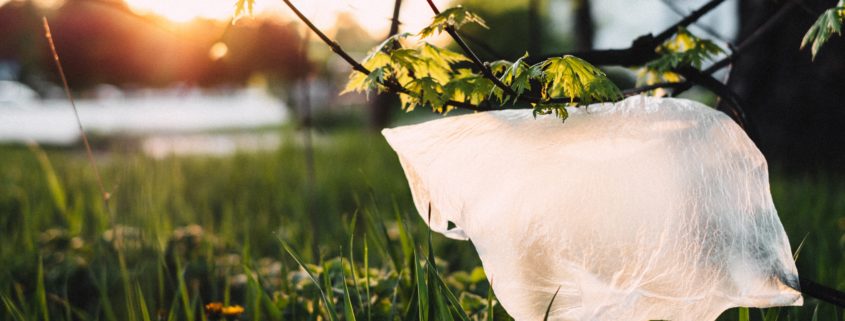Plastic packaging - what about recycling?
What is plastic?
Plastics are polymers of versatile origin, application, manufacture and properties. You are u.a. Tensile, temperature resistant and elastic. There are many different plastics which e.g. serve as building materials, consumables, or packaging. A life without plastics is almost impossible since they can be found everywhere, in house building, in mobile phones, in kitchen utensils, as a décor, or as a carrying bag. In addition, they find an important application, as packaging material in the food, and consumables industry. [1]
Why plastic?
Plastics have many properties, which materials do not include metals or better recyclable materials such as paper, cardboard or wood. Our comfort today is based on plastic. If you look around, there is plastic everywhere. Today's world is unimaginable without plastic. [2]
What is there for plastic packaging?
Plastic packaging can consist of a variety of different plastics, each with its own individual advantages and disadvantages.
→ Common plastics are PET, PE, PP, PS, PVC, PC and PA [3]
→ PET (polyethylene terephthalate) is mainly used for drinking bottles and outer packaging such as Used shells. It is chemically resistant, only stronger acids are a bit problematic. PET is highly recyclable, and due to the German pledge law, about 97% of PET bottles are recycled. Apart from the bottles, PET is recycled to about 30% sorted. A reusable PET bottle can be refilled up to 16 times, after which they are shredded, melted and recycled like disposable PET bottles. At the moment, PET is the most environmentally friendly plastic, not least because of its cost-effectiveness. It is mainly made from fossil raw materials, but can also be produced as "bio-PET" partly from renewable raw materials. [4]
→ PE (polyethylene) is the most commonly used plastic for packaging, at around 30%. Different methods can be used to produce different types of PE. Primary LDPE and HDPE (Low Density Polyethylene) (High Density Poly Ethylene). PE is 100% recyclable, and can be sorted to approximately 98% sorted. PE is relatively gas permeable, which means that it can not be used alone for closed containers. It is mainly made from fossil raw materials. [5]
→ PP (polypropylene) is similar to PP, but more stable. It also has good barrier properties to water vapor and fats. It can be quite well recycled, but as it is a fairly new plastic, it will not do so much. It is mainly made from fossil raw materials. [6]
→ PS (polystyrene) is moderately easy to recycle, but due to the rather high density and the resulting weight, it has high transport costs and CO2 emissions. In addition, polystyrene can not be recycled for food use because it may be left with contaminants. It is mainly used for disposable tableware, it is also cheap and permeable to water vapor. It is mainly made from fossil raw materials. [7]
→ PVC (polyvinyl chloride) is the most important plastic after PP and PE. It is very resistant to UV, alkalis, acids, fats and alcohol. Its use, however, has declined sharply as it often contains plasticizers. The recycling rate is low so far, as the PVC is difficult to recycle, and its quality decreases with each time it is recycled. It is mainly made from fossil raw materials. [8]
→ PC (polycarbonates) are very hard, transparent and colorless plastics found in reusable hard plastic bottles and in CD blanks. It is hardly recycled, and also less and less used in food packaging, since it consists mainly of bisphenol A. It is mainly made from fossil raw materials. [9]
→ PA (polyamides) are tough, impact-resistant plastics, usually with a low melting point. They are moderately easy to recycle, but the process is so uneconomical that few people run PA recycling facilities. [10]
Are organic plastics an alternative?
„Bio-plastic "is a misguided word. Many plastics are made from fossil fuels, and oil reserves must be used. In addition, tons of CO2 are released. So-called bio-plastics are often partly or even entirely made from renewable raw materials, which reduces CO2 emissions and makes them independent of crude oil, but this only changes very little in the end result of the environmental balance since non-biodegradable plastic is still produced. Even really biodegradable plastics are often praised by misinformation. The PLA (polylactide) e.g. is a 100% biodegradable plastic, which consists of lactic acid, which in turn is obtained from fermentation. However, it is degradable only at temperatures above 60 ° C, a temperature which is not present in the house compost. Thus, the PLA is degradable only in Kompostieranlagen. Now the big problem, such PLA Kompostieranlagen there are hardly. The PHA (polyhydroxyalkanolates) are an interesting new type of bio-plastic. They are biologic in origin because some bacteria use them as energy stores and have perfect properties for use as packaging. [11]
What are the problems with recycling?
Mainly the problem is "human". Many people do not care about the environment and therefore do not act properly. And even people who care about the environment often can not properly separate, not because of malice, or ignorance, but are many packaging blends, layers of different packaging materials, which you can not separate yourself. All in all, recycling is far from perfect, not even a good system, as it is now. It would have something to change the attitude of many people, the priority of the countries, and the implementation within this, so that recycling unfolds its full potential. [12]
Sources and information to read:
Wikipedia[1][2][11][12]
Consumer Center article on plastics[3][4][5][6][7][8][9][10]




Danke für den informativen Beitrag! Besonders spannend fand ich den Abschnitt über Biokunststoffe – es zeigt, dass ‚bio‘ nicht automatisch nachhaltig ist. Auch das Problem mit Mehrschichtverpackungen ist ein wichtiges Thema. Mich würde interessieren, welche Lösungen am meisten zur Verbesserung des Recyclings beitragen könnten.
Lg Ella